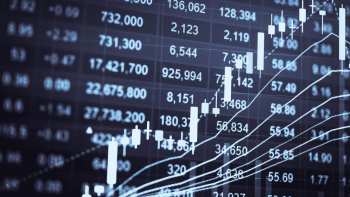German Electricity Prices on the EPEX Spot Exchange in 2021
- German electricity price level rises significantly – How did the fuel and CO2 markets influence electricity prices in 2021?
- Price spreads increase analogously to the electricity price level – What does this mean for the marketing of flexibilities?
- 139 hours with negative prices on the day-ahead market – Issue of an increasing number of negative electricity prices loses importance
German Electricity Price Level Rises Significantly – How Did the Fuel and CO2 Markets Influence Electricity Prices in 2021?
The German electricity price level rose very sharply in 2021, causing the price of baseload on the day-ahead market to more than triple compared to 2020. Similarly, the prices of peak load (average price on working days Monday to Friday from 8 a.m. to 8 p.m.) and off-peak load (average price of all hours that are not in peak) also rose. The following figure shows the average German electricity prices for the base, peak, and off-peak on the day-ahead market of the last five years. The ratio of peak to base is approx. 1.2 and of offpeak to base approx. 0.9 and has not changed significantly in recent years.

The high rise in electricity prices has been widely discussed in the media, especially as an increasing number of energy suppliers are raising household electricity prices so that the price increase is also felt by the final consumer. In the medium term, however, and especially in the long term, household electricity prices may decrease again due to an increase in the expansion of renewable energies and an easing of the situation on the fuel markets.
The specialist media has discussed the “why” of the rise in electricity prices in many ways. The following two figures take up these discussions and show the fuel prices and the CO2 price, compared to the weekly base electricity price on the day-ahead market, as well as resulting marginal cost ranges of gas-fired power plants (efficiency 40 – 60 %) and hard coal-fired power plants (efficiency 35 – 45 %). All prices rose sharply towards the end of the year. In particular, the level of the electricity price and the gas price increased fivefold and tenfold, respectively, at times.
The rise in the gas price was due, particularly to high global gas demand due to Corona catch-up effects, insufficiently filled European gas storage facilities, and reduced supplies of Russian natural gas. The price of electricity on the day-ahead market is in turn dependent on fuel prices and CO2 prices, which determine the marginal costs of conventional power plants and volatile feed-in volumes from renewables. The comparison of prices and marginal costs in the third figure shows that the very high electricity prices are due in particular to the high gas prices and less to the increase in the CO2 price, the hard coal price, and the oil price.


For a detailed analysis of the characteristics of the electricity price, the following figure maps the hourly (day-ahead market) or quarter-hourly (continuous intraday trading) electricity prices of 2021. The regular daily, weekly, and seasonal profile of electricity prices observed in recent years (2019, 2020) can still be seen to some extent but is clearly overlaid by the sharp increase in electricity prices in the second half of the year. In the months of September to December, however, there were lower and, in some cases even negative electricity prices on some days due to high feed-ins of renewable energies, especially at midday with higher PV feed-ins and at night with lower electric loads. This leads directly to the question of how the high electricity price level affected the price spreads and thus the revenue opportunities of flexibilities.

Price spreads increase analogously to the electricity price level – What does this mean for the marketing of flexibilities?
In addition to the price level, the price spreads are decisive for marketing flexibilities on the electricity markets. For this purpose, the following Figure 5 analyzes the maximum daily spreads of day-ahead trading, maximum intra-hourly spreads of the intraday auction, and spreads between quarter-hourly continuous intraday trading and intraday auction for the years 2019 to 2021. It can be seen that a different level of price spreads has been established in both the hourly day-ahead market and the quarter-hourly intraday auction as of September 2021.
The average, maximum daily price spread in the day-ahead market was well above 100 €/MWh from October 2021 (194 €/MWh in December), and the average, intra-hourly spread in the intraday auction was well above 50 €/MWh (75 €/MWh in December). For Q4 typically, the highest intra-hourly price spreads during this period occurred in the late evening hours from 7 pm to 1 am and in the early morning hours from 4 am to 8 am, respectively. At these times, the largest intra-hour residual load changes occur (decreasing in the late evening and increasing in the early morning), so the intra-hour price varies greatly. Another interesting analysis is to calculate the difference between the quarter-hourly continuous intraday price and intraday auction price.
Here, the intraday auction price is the expected value of continuous intraday trading, so the spread plot reflects price uncertainty. In recent years, the spread did not vary systematically by season; instead, a high feed-in of renewable energy, for example, indicated possible high price volatility. However, with the sharp increase in electricity price levels and spreads, the uncertainty of the continuous intraday price has now also increased significantly over the last four months, with little time-of-day variation in price volatilities. Instead, the high price uncertainty arises in particular from a much steeper merit order on the supply side in the intraday market, so that even small forecast errors in the continuous intraday market mean large price deviations from the intraday auction.

The following table supplements the visual analyses with key figures on the maximum hourly and daily price spreads as well as hourly and daily standard deviations of electricity prices. Again, a sharp increase in electricity price volatility is evident. In particular, the 2-2.5 times higher standard deviation of daily day-ahead and intraday prices in 2021 compared to 2020 shows the significantly increased revenue potential of daily flexibilities.
In a previous publication [6], we highlighted the revenue potential of bidirectional electric vehicles as exemplary daily flexibility. Simulations with future modeled electricity prices revealed a strong correlation of the revenue potentials from the average daily standard deviation of electricity prices. Therefore, revenue potentials are expected to more than double in 2021 compared to those reported for 2019. A bidirectional electric vehicle (100 kWh battery capacity, 11 kW charge/discharge capacity) could thus increase revenues from 650 €/yr in 2019 to over 1,300 €/yr in 2021 with combined marketing on the day-ahead and intraday markets and exemption from levies and charges.
| year | Day-ahead market (hourly) |
Intraday auction (quarter-hourly) |
Quarter-hourly continuous intraday trading (average price) |
|||
| daily | daily | hourly | daily | hourly | ||
| Maximum price spread in €/MWh (averaged over the year) |
2021 | 80.3 | 138.2 | 37.4 | 143.5 | 33.8 |
| 2020 | 32.5 | 70.0 | 20.2 | 79.1 | 18.0 | |
| 2019 | 30.1 | 53.3 | 16.3 | 62.7 | 14.3 | |
| 2018 | 32.2 | 58.8 | 17.5 | 68.2 | 16.1 | |
| Standard deviation in €/MWh (averaged over the year) |
2021 | 24.5 | 29.7 | 16.4 | 30.1 | 14.8 |
| 2020 | 9.4 | 13.8 | 8.9 | 14.9 | 8.0 | |
| 2019 | 9.0 | 11.7 | 7.2 | 13.0 | 6.4 | |
| 2018 | 9.8 | 12.9 | 7.7 | 14.1 | 7.2 | |
Table 1: Analysis of the price spread and standard deviation of electricity prices on German spot markets in 2018 to 2021 according to data from EPEX SPOT [1].
139 Hours with Negative Prices on the Day-Ahead Market – Issue of an Increasing Number of Negative Electricity Prices Loses Importance
Table 2 summarizes the development of the number of hours (day-ahead market) or quarter hours (intraday trading) with negative electricity prices over the last five years. In 2019 and 2020, the increase in hours with negative electricity prices was a major issue. In an analysis of electricity prices in 2020, we have already shown that due to an increasing flexibilization of plants in the German power system, a further significant increase in the number and average negative prices is not expected. Due to the strong increase in the level of electricity prices, the number of hours/quarter hours with negative prices also fell sharply in 2021. Especially in the second half of the year, these hardly occurred anymore. Due to the high variable marginal costs, an increasing number of large conventional power plant units no longer enter the market with negative supply prices. In addition, the supply of electricity has been tightened by the closure of coal-fired power plants.
| Year | Number of negative prices | The average price in €/MWh | Volume traded in MWh | Electricity value in million € |
|
| Day-ahead market (hourly) | 2021 | 139 | -16.4 | 30,021 | -72.9 |
| 2020 | 298 | -15.5 | 30,536 | -148.6 | |
| 2019 | 211 | -17.3 | 36,191 | -133.8 | |
| 2018 | 134 | -13.7 | 34,998 | -68.4 | |
| 2017 | 146 | -26.5 | 37,127 | -152.7 | |
| Intraday auction (quarter-hourly) | 2021 | 784 | |||
| 2020 | 2,041 | ||||
| 2019 | 1,095 | ||||
| 2018 | 852 | ||||
| 2017 | 1,133 | ||||
| Quarter-hourly continuous intraday trading (average price) |
2021 | 796 | |||
| 2020 | 1,783 | ||||
| 2019 | 1,142 | ||||
| 2018 | 912 | ||||
| 2017 | 1,272 |
Table 2: Number of negative exchange electricity prices in the years 2017 to 2021 according to data from EPEX SPOT [1].
An analysis of European day-ahead prices can be found here.
| Sources: | |
| [1] | EPEX SPOT. 2021. “Market data”, https://www.epexspot.com/en/market-data |
| [2] | EEX European Energy Exchange. 2021. „Spot market data – TTF“, https://www.powernext.com/spot-market-data |
| [3] | Statistisches Bundesamt (Destatis). 2021. „Preisindizes für die Einfuhr“, https://www.destatis.de/DE/Home/_inhalt.html |
| [4] | OPEC Organisation erdölexportierender Länder. 2021. „OPEC Basket Price“, https://www.opec.org/opec_web/en/data_graphs/40.htm |
| [5] | EEX European Energy Exchange. 2021. “Environmental Markets – Futures Market”, https://www.eex.com/en/market-data/environmental-markets/derivatives-market |
| [6] | Kern, Timo; Dossow, Patrick; von Roon, Serafin. 2020. “Integrating Bidirectionally Chargeable Electric Vehicles into the Electricity Markets” Energies 13, no. 21: 5812, https://www.mdpi.com/1996-1073/13/21/5812/htm |

